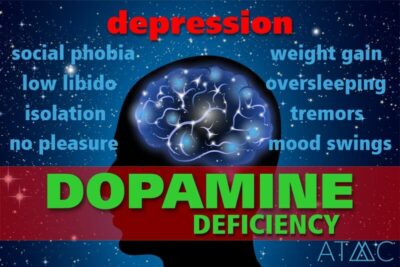Fanapt Withdrawal — Discontinuing/Quitting Safely
The decision to discontinue Fanapt is best done in consultation with your primary caregiver who can advise you on proper tapering protocols and can provide options for adequate monitoring of your health throughout the process. Clinical evidence shows that withdrawal accompanied by neurotransmitter precursors can shorten the withdrawal period considerably.1
In general, one should never abruptly stop taking antipsychotic medication. The only exception to this rule is where potentially fatal allergic or other reactions occur that may lead to stroke, coma, or death. Where these extreme adverse effects present, the patient should be transported to a medical facility for immediate intervention, which will require supervised cessation of Fanapt supported by a respirator, oxygen delivery, and other means of critical life support.
If you do miss a dose accidentally, the label advises you to either take it when you remember, or if it is very close to your next scheduled time, skip the one missed, and take only one pill as usual. It is not recommended to take a doubled dose.
The problems of Fanapt withdrawal can be challenging, as with all antipsychotic drugs. Some consider the process to be even more challenging than coming off heroin or benzodiazepines, neither of which are easy to navigate through easily.
 When Fanapt is taken, it deflects dopamine at specific receptors, counteracting any excitatory effect. Reducing the dosage, as in a taper, can release a flood of dopamine that was previously restricted, and this can present as clinical mania. If the increased expression of dopamine is too excessive, it may be necessary to regain control of the situation by temporarily managing symptoms in a hospitalized setting, under the care of a trusted doctor to regain stability. This makes it possible to re-introduce a slow taper later. This is especially pertinent where Fanapt has been taken for many years, and this may be the safest way to navigate through any such difficulty while tapering off the drug.
When Fanapt is taken, it deflects dopamine at specific receptors, counteracting any excitatory effect. Reducing the dosage, as in a taper, can release a flood of dopamine that was previously restricted, and this can present as clinical mania. If the increased expression of dopamine is too excessive, it may be necessary to regain control of the situation by temporarily managing symptoms in a hospitalized setting, under the care of a trusted doctor to regain stability. This makes it possible to re-introduce a slow taper later. This is especially pertinent where Fanapt has been taken for many years, and this may be the safest way to navigate through any such difficulty while tapering off the drug.
Our goal is to help the person transition to being medication-free, or at the lowest dose possible which provides the best possible quality of life.
What is Fanapt Used For?
The FDA approved Fanapt in 2009 for the treatment of schizophrenia in adults.
While it has not been unheard of for this class of drug to develop a history of off-label uses, none have been found in the medical literature we reviewed for Fanapt to date.
How Does Fanapt Work?
It is believed that Fanapt deflects dopamine at certain receptors, which reduces mania. But it is expected that the body begins to adapt or compensate by creating new dopamine receptors. This could be, at least in part, why drugs like Fanapt seem to stop working after a period of time, and why some quite dramatic Fanapt withdrawal symptoms are likely to present.
Fanapt (iloperidone) Alternative Names and Slang
Fanapt was previously called “Zomaril,” and iloperidone is the generic name.
Fanapt has not acquired slang names and is not known as a street drug.
Fanapt Side Effects
Fanapt side effects are similar to other antipsychotic medications. According to the black box label that the FDA put on the packaging, Fanapt is not approved for use in patients with dementia-related psychosis, due to increased risk of death.2
Please note that symptoms of orthostatic hypotension are associated with the drug. According to the FDA drug label information, and published research, starting Fanapt at a low dose and titrating up slowly can help mitigate possible dizziness, tachycardia, syncope, and other side effects.2,6
Fanapt side effects that are serious can include:
- Tardive dyskinesia: a potentially irreversible movement disorder characterized by involuntary tongue rolling, facial grimaces, and fast or erratic motions of limbs or extremities.2,3
- Allergic reaction: a life-threatening condition characterized by swelling of the face, throat, tongue, etc., hives, and difficulty breathing that requires immediate medical intervention.
- Severe nervous system reaction: sudden weakness, muscle rigidity, high fever, profuse sweating, heart palpitations, feeling faint, confusion, flu-like symptoms, sore throat, painful skin sores, or sores in the mouth.
- Chest pain, headache, dizziness, fainting, pounding heartbeat.
- Inability to urinate.
Other more common side effects include:
- Cognitive impairment, slowed thinking processes, slowed reactions and movements
- Other “psychiatric” symptoms
- Changes in menstrual periods
- Swelling in the breasts, discharge
- Orthostatic hypotension: a significant decrease in blood pressure, associated with fainting, dizziness, or lightheadedness that happens when you stand up from a sitting or lying position.
- Hypersensitivity to temperature (hot or cold)
- Nausea
- Stomach pain
- Joint pain
- Diarrhea
- Decreased sexual ability in men
- Drowsiness
- Drooling, excess salivation
- A painful erection lasting four hours or more
- Trouble swallowing
- Tremors, shakiness
- Spasmodic muscle movements
- Dizziness
- Dry mouth
- Weight gain
- Cold-like symptoms, i.e., stuffy nose, cough, fever
- Note: this is not a complete list. Always seek medical attention for a symptom that seems unusual or uncomfortable.

 When Fanapt is taken, it deflects dopamine at specific receptors, counteracting any excitatory effect. Reducing the dosage, as in a taper, can release a flood of dopamine that was previously restricted, and this can present as clinical mania. If the increased expression of dopamine is too excessive, it may be necessary to regain control of the situation by temporarily managing symptoms in a hospitalized setting, under the care of a trusted doctor to regain stability. This makes it possible to re-introduce a slow taper later. This is especially pertinent where Fanapt has been taken for many years, and this may be the safest way to navigate through any such difficulty while tapering off the drug.
When Fanapt is taken, it deflects dopamine at specific receptors, counteracting any excitatory effect. Reducing the dosage, as in a taper, can release a flood of dopamine that was previously restricted, and this can present as clinical mania. If the increased expression of dopamine is too excessive, it may be necessary to regain control of the situation by temporarily managing symptoms in a hospitalized setting, under the care of a trusted doctor to regain stability. This makes it possible to re-introduce a slow taper later. This is especially pertinent where Fanapt has been taken for many years, and this may be the safest way to navigate through any such difficulty while tapering off the drug. At Alternative to Meds Center, our approach is simply to help a person in holistic ways, by introducing non-drug-based therapies to improve natural mental health as well as many other benefits involving the physical aspects of health. Physical health and mental health might be considered symbiotic. If that is true to any degree, it might make sense not to disregard either side of the equation.
At Alternative to Meds Center, our approach is simply to help a person in holistic ways, by introducing non-drug-based therapies to improve natural mental health as well as many other benefits involving the physical aspects of health. Physical health and mental health might be considered symbiotic. If that is true to any degree, it might make sense not to disregard either side of the equation.







